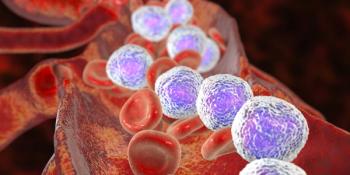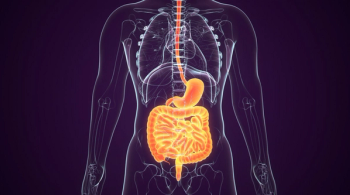
Oncology NEWS International
- Oncology NEWS International Vol 11 No 11
- Volume 11
- Issue 11
Zevalin Safe, Effective in NHL Patients After Previous Radiotherapy
NEW ORLEANS-Treatment with the radioimmunotherapy drug ibritumo-mab tiuxetan (Zevalin) appears to be safe and effective for patients with some of the most common types of non-Hodg-kin’s lymphoma (NHL) who have received prior external beam radiotherapy, Roger M. Macklis, MD, said at the 44th Annual Meeting of the American Society for Therapeutic Radiology and Oncology (ASTRO abstract 240).
NEW ORLEANSTreatment with the radioimmunotherapy drug ibritumo-mab tiuxetan (Zevalin) appears to be safe and effective for patients with some of the most common types of non-Hodg-kin’s lymphoma (NHL) who have received prior external beam radiotherapy, Roger M. Macklis, MD, said at the 44th Annual Meeting of the American Society for Therapeutic Radiology and Oncology (ASTRO abstract 240).
The results of the retrospective study are encouraging for investigators who hope that the combination is radiosyn-ergistic and might allow expansion of the patient population who can benefit from Zev-alin therapy by permitting lower effective doses, said Dr. Macklis, chair of the Department of Radiation Oncology, Cleveland Clinic Foundation, and lead investigator of the study.
Zevalin consists of a murine monoclonal antibody (ibritumomab) bound to a radioactive isotope (yttrium-90) by a strong linking agent (tiuxetan). The antibody targets the CD20 antigen on the surface of mature B cells and B-cell tumors.
The researchers analyzed database information on 211 patients registered in Zevalin clinical trials: 60 patients who had received prior external beam radiotherapy and 151 patients who had not. "There is no evidence at this point of an increased response or increased adverse events in patients who received Zevalin after prior radiation," Dr. Macklis said.
There was no significant difference in the incidence of grade 3-4 adverse events for patients with or without prior radiotherapy. There was a suggestion of an increased risk of grade 3-4 adverse events in the central nervous and respiratory systems (P = .07) with previous radiotherapy. However, the investigators dismissed even this nonsignificant increase because some of the patients with these adverse events had not received prior radiotherapy to the areas in question.
The study was inspired by observations in Dr. Macklis’ lab that relatively low doses of ionizing radiation increased CD20+ surface expression by 35% to 45% in a panel of human B-cell lines. The next question is whether this in vitro finding of CD20+ surface antigen radio-induction can be used clinically.
Zevalin’s dose-limiting toxicity, involving hematopoietic suppression and thrombocytopenia, make depressed bone marrow reserves an important factor for appropriate patient selection. Mechanisms to amplify antibody targeting and CD20+ surface antigen expression could potentially allow groups of currently ineligible patients to receive this treatment at lower but still effective doses.
The Cleveland Clinic is currently enrolling patients in two trials exploring the utility of the radioenhancement effect: One trial uses low-dose Zevalin (0.1 mCi/kg) for patients with poor bone marrow reserves. A second trial offers concurrent radiotherapy and rituximab (Rituxan) immunotherapy to patients with refractory indolent NHL.
Articles in this issue
about 23 years ago
Zoledronic Acid Reduces SREs in Solid Tumorsabout 23 years ago
Study Supports Wider Use of SLN Biopsy in Breast Cancerabout 23 years ago
Minorities Less Likely Than Whites to Receive Good Pain Careabout 23 years ago
Polyglutamate-Paclitaxel Controls Recurrent Ovarian Cancerabout 23 years ago
9cRA Shown to Reverse Premaliagnant Changes in Ex-Smokersabout 23 years ago
FDA Names New ODAC Chairabout 23 years ago
Neoadjuvant Weekly Paclitaxel Effective in Advanced Breast Cancerabout 23 years ago
Docetaxel Plus Gemcitabine Promising in Advanced Pancreatic Cancerabout 23 years ago
Polysaccharides Unique Targets for Immunotherapyabout 23 years ago
Genetic Fingerprinting Shows Distinct Sarcoma SubsetsNewsletter
Stay up to date on recent advances in the multidisciplinary approach to cancer.

















































































